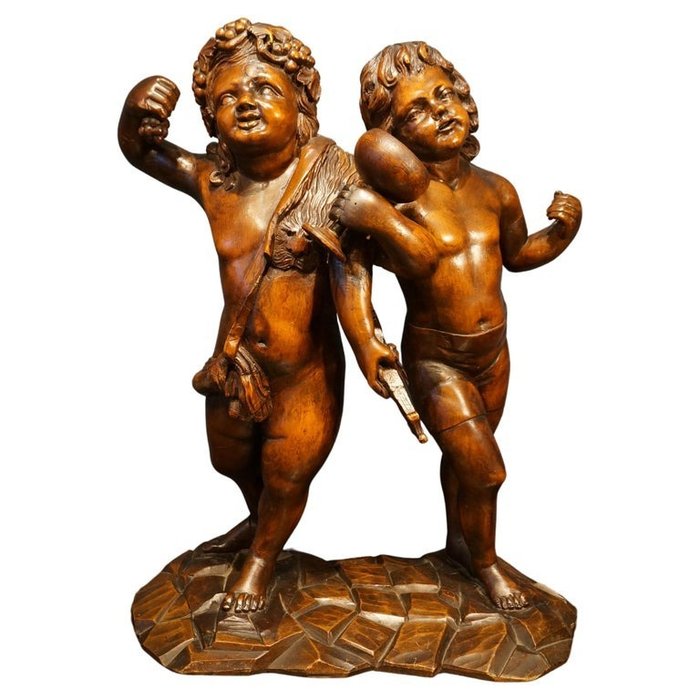
sculptuur, San Sebastián - 80 cm - Hout
Nr. 83373367

Nr. 83373367

Handcarved baroque wooden sculpture depicting the two accomplises Bacchus and Amor.
Bacchus is wearing a grapevine in his hair and holds up a bunch of grapes. A jaguar skin is draped around his shoulder and in his left hand he holds a goblet. Bacchus walks arm in arm with Amor, who is holding a quiver in his right hand, presumabbly in his left hand there was an arrow, that is now missing.
This 18th century woodcarving was probably made in Germany. It is approx. 76 cm. heigh.
Condition: there are some reconstructions, among others the base on wich the winegod and god of love are standing is mostly of a later period. In addition, some pieces have been restored/replaced in the wood, there is a crack in the left foot of Bacchus.
Eros was the Greek god of carnal love. In Latin he is called Amor (love) or Cupid (desire). Eros was the assistant, and according to some the son, of Aprhodite, the goddess of love and fertility. He made people fall in love by shooting an arrow into their heart. Eros himself lost his heart to the breathtakingly beautiful Psyche, the daughter of a king. In art Eros is often portrayed as a winged and chubby boy with a bow and arrow. Such a figure is also known as a ‘putto’. Putti are also frequently depicted together, and in such cases they are not always involved with love. A blindfolded Eros usually stands for lust. Alternately, when he slumbers, it means suppressed sensuality. Two putti fighting each other could represent Eros and his opposite, Anteros, requited love. Eros with a torch held downward is a symbol of death. (Rijksmuseum)
Bacchus was the Roman god of agriculture, wine and fertility, equivalent to the Greek god Dionysus. He is often seen with vines of grapes with him. Dionysus was said to be the last god to join the twelve Olympians. Supposedly, Hestia gave up her seat for him. His plants were vines and twirling ivy. He carried a pine cone-topped staff, and his followers were goat-footed Satyrs and Maenads, wild women who danced energetically during his festivals. Bacchus is the son of Jupiter. (Wikipedis)
Zo koop je op Catawiki
1. Ontdek iets bijzonders
2. Plaats het hoogste bod
3. Veilig betalen